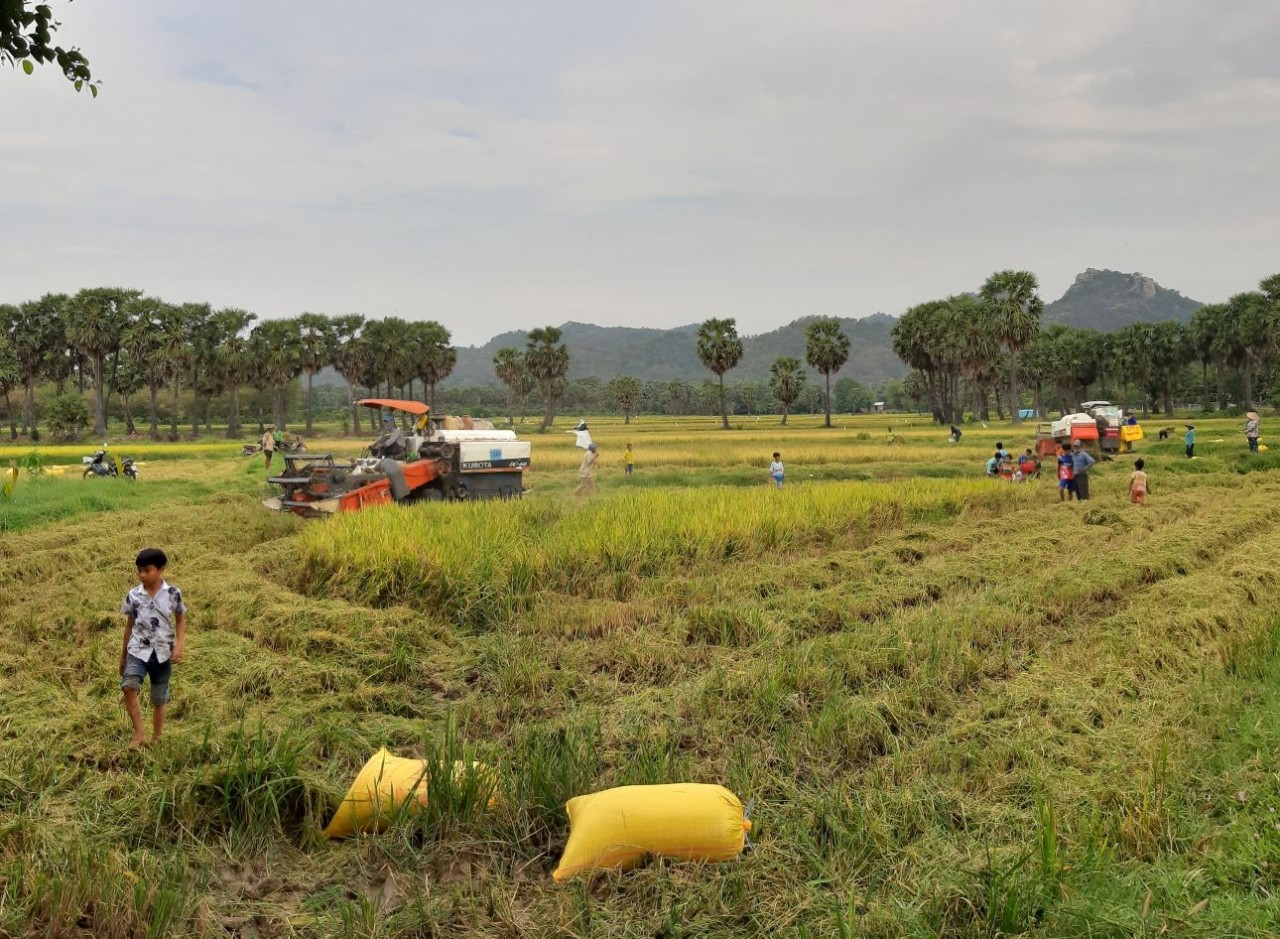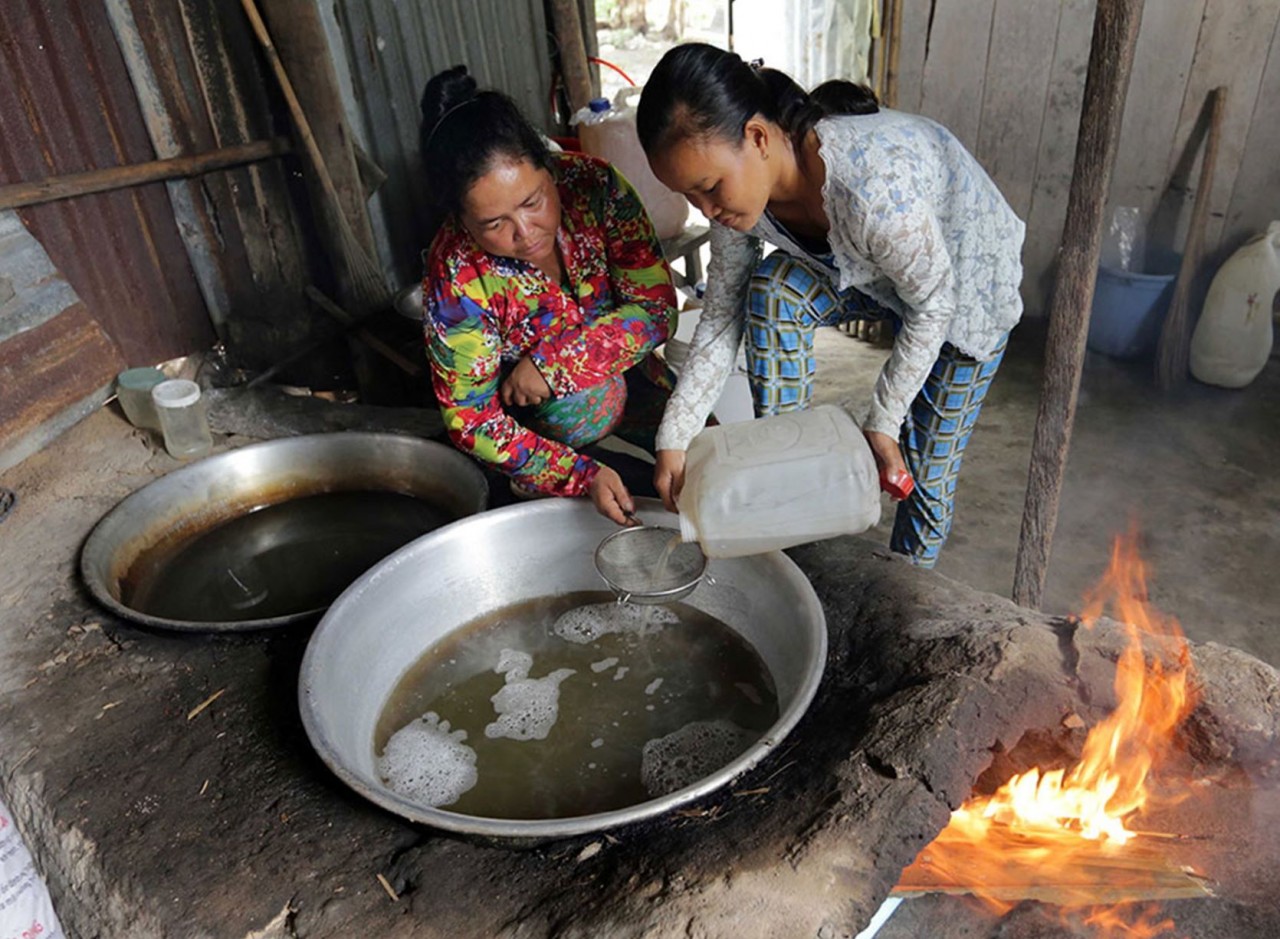
Ethnic policies change lives of ethnic minorities in An Giang province
Latest
 |
| An Giang supports investment in infrastructure development, and many production models are deployed among ethnic minorities to support sustainable poverty reduction. (Photo: Phuong Nghi) |
Completely change rural perspective
It is easy to recognize that the rural perspective has changed completely while entering the Khmer people’s villages. In particular, the smooth transportation system not only creates favorable conditions for travel between communes and towns, but also supports people in transporting agricultural products of mountainous areas to the plains, district centers, and local markets.
After three years of implementing National Target Program 1719 (the Program), by the end of October 2023, the province has invested in 66 infrastructure projects, with 24 completed projects. In particular, 15 out of 52 projects have been completed in Tri Ton district, nearly half of the projects in Tinh Bien district, and 100% in Thoai Son and An Phu districts. Resources from the Program have contributed to fulfilling the infrastructure system to serve production and people’s lives, especially for ethnic minorities in exceptionally difficult areas.
According to Chau Anne, Deputy Head of the Provincial Ethnic Committee, along with infrastructure investment, the province is diversifying livelihoods and developing a poverty reduction model, thereby being allocated over 13.6 billion VND (including a central budget of nearly 12.4 billion VND). Thanks to a total cost of more than 7 billion VND, the province also built 27 poverty reduction models for 810 poor, near-poor, and newly-escaped poverty households to join in, implemented 18 projects to support the development of agricultural, forestry, and fishery production, and supported 263 households to participate in. In addition, 179 short-term vocational training classes were opened for nearly 5.400 workers from poor households with a budget of more than 3.5 billion VND. Therefore, workers will gain knowledge and vocational skills, contributing to creating jobs, increasing income, and stabilizing their lives.
“According to multidimensional poverty criteria, the province had 20.129 poor households (accounting for 3.82%) at the beginning of 2022, in comparison with 14.872 poor households by the end of the year. There are 3.161 poor ethnic minority households and 24.370 near-poor households, decreasing 3.15% and 1.32% compared to the beginning of the year, respectively,” he said.
Through the implementation of national policies as well as support for production development and infrastructure investment, especially social welfare development projects, the Khmer’s material and spiritual life has been significantly enhanced.
 |
| Provided with tools to restore the traditional cooking jaggery profession, Ms. Neang Kha Ly’s family has become more and more prosperous. (Photo: Phuong Nghi) |
Millions of households escape from poverty
Livelihood support for ethnic minorities does not only stop at providing “livelihoods” with machines and equipment, but the professional sector also demonstrates “how to make a living” through organizing vocational training classes.
O Lam commune (Tri Ton district) has a population of over 97% ethnic Khmer people. In recent years, thanks to the State’s programs and projects, many households have changed their lives, escaping poverty.
Visiting Mr. Chau Nung’s cow farming model in Phuoc Loi hamlet, the systematic farming method and developed cows surprised us. His family used a loan of 8 million VND from capital support for ethnic minority households in extremely difficult areas and 20 million VND from the poor household program to raise cows for breeding. After 4 years, they had a herd of 6 cows, which was not only their valuable asset but also provided them with a source of fertilizer to renovate 3 square meters of land to grow vegetables, earning an annual income of more than 50 million VND.
Thanks to the support with tools to restore the traditional cooking palm sugar profession, Ms. Neng Kha Ly’s family in To An hamlet is increasingly prosperous. “Our life before was unstable since we had difficulty in sugar production due to lack of capital. With the State’s capital support to buy pots and cooking utensils, we can now expand the profession. Apart from nearly a dozen palm trees at home, we also rent another 30 palm trees from locals to get water to produce sugar every day”.
In order to effectively implement the Program, the province sets specific goals, especially prioritizing communes with special difficulties to focus on key investments. In addition, the province mobilizes the participation of the entire political system and people’s cooperation to implement the Program, which is the province’s motivation for socio-economic development, sustainable poverty reduction, contributing to changing ethnic minority areas’ appearance, and improving their lives.

















